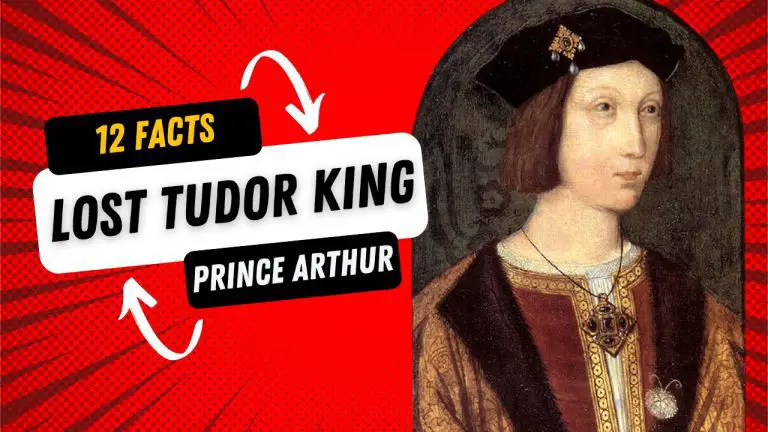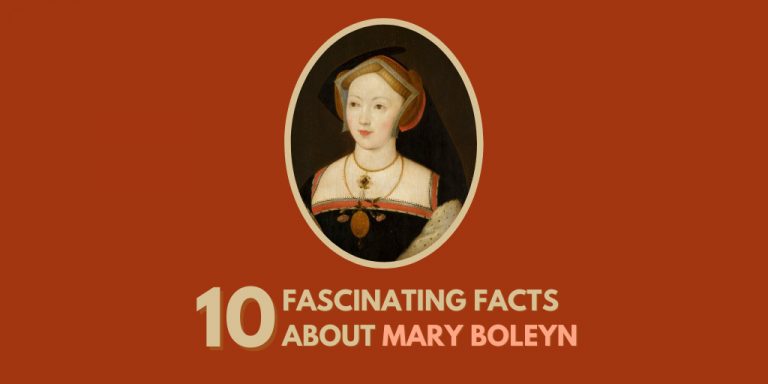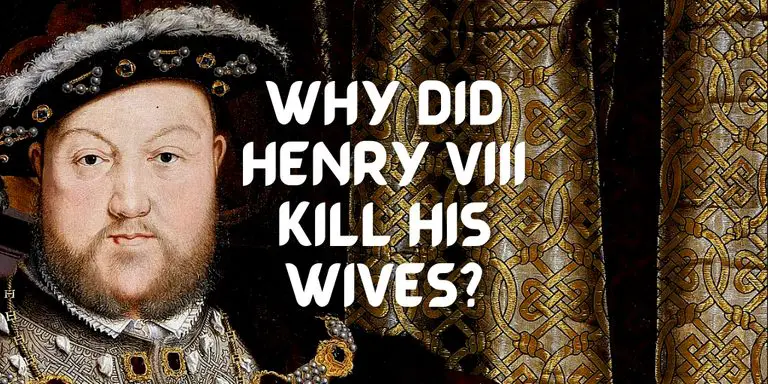Where is Henry VIII buried? The strange story of Henry VIII’s grave.
A King so well known and so feared in his lifetime as Henry VIII, you might expect to have a magnificent tomb so that the mere mortals of this earth could remember him.
Some monarchs were egomaniacs and carried that practice on into death. Henry was probably the biggest egomaniac of the lot.
Yet it’s surprising that Henry VIII’s final resting place could easily be overlooked.
King Henry VIII is buried in a vault under the quire of St George’s Chapel, Windsor Castle. He lies, as he had planned, next to his third wife, Jane Seymour.
But for hundreds of years, there was nothing in place to mark its existence at all. No grand tomb. No marker. Not even a simple wooden cross.
He was not even allowed to rest in peace, his grave was opened and used again.
The tale of Henry VIII’s grave is a sad one of betrayal and disrespect. But possibly that is little more than Henry VIII deserved.
The story begins when Henry VIII was in his prime and not thinking about death at all.
[/et_pb_text][/et_pb_column][/et_pb_row][et_pb_row _builder_version=”4.15″ _module_preset=”default” global_colors_info=”{}”][et_pb_column type=”4_4″ _builder_version=”4.15″ _module_preset=”default” global_colors_info=”{}”][et_pb_video src=”https://youtu.be/E9bMMxnF4Ig” _builder_version=”4.15″ _module_preset=”default” global_colors_info=”{}”][/et_pb_video][/et_pb_column][/et_pb_row][et_pb_row _builder_version=”4.15.0″ _module_preset=”default”][et_pb_column _builder_version=”4.15.0″ _module_preset=”default” type=”4_4″][et_pb_text _builder_version=”4.15.0″ _module_preset=”default” hover_enabled=”0″ sticky_enabled=”0″]Cardinal Wolsey’s plans for his own tomb
[/et_pb_text][/et_pb_column][/et_pb_row][et_pb_row _builder_version=”4.15″ _module_preset=”default” global_colors_info=”{}”][et_pb_column type=”4_4″ _builder_version=”4.15″ _module_preset=”default” global_colors_info=”{}”][et_pb_text _builder_version=”4.15″ _module_preset=”default” global_colors_info=”{}”]Cardinal Wolsey was Henry VIII’s first chief minister.
In many ways, he became king in all but name. The young Henry VIII let Wolsey get on with running the kingdom while he went about enjoying himself as much as possible.
Cardinal Wolsey was responsible for building the grand palace at Hampton Court. It was to be in his country retreat.
However, when the Cardinal wanted to gain a little more favour with Henry VIII, he decided to present the palace to him. Henry, gratefully accepted. To be fair, who wouldn’t?
Wolsey fell from power for failing to secure Henry’s annulment from Catherine of Aragon. He died at Leicester while under arrest.
The vast majority of the Cardinal’s possessions were taken by the crown. As was the case with most men accused of treason.
Within the inventory were discovered some elaborate plans for a tomb, together with a wonderfully sculpted black marble sarcophagus.
Henry VIII looked at this and thought it could be the basis for his own tomb.
The king began designing his own grand memorial for when he died, with Wolsey’s black marble sarcophagus as the base.
[/et_pb_text][et_pb_image src=”http://historywithhenry.com/wp-content/uploads/2022/04/640px-Cardinal_Thomas_Wolsey.jpg” alt=”Cardinal_Thomas_Wolsey” title_text=”640px-Cardinal_Thomas_Wolsey” align=”center” _builder_version=”4.15.0″ _module_preset=”default” global_colors_info=”{}”][/et_pb_image][/et_pb_column][/et_pb_row][et_pb_row _builder_version=”4.15.0″ _module_preset=”default” global_colors_info=”{}”][et_pb_column type=”4_4″ _builder_version=”4.15.0″ _module_preset=”default” global_colors_info=”{}”][et_pb_text _builder_version=”4.15.0″ _module_preset=”default” header_2_text_color=”#8300E9″ global_colors_info=”{}”]Henry VIII’s Death
[/et_pb_text][/et_pb_column][/et_pb_row][et_pb_row _builder_version=”4.15.0″ _module_preset=”default” global_colors_info=”{}”][et_pb_column type=”4_4″ _builder_version=”4.15.0″ _module_preset=”default” global_colors_info=”{}”][et_pb_text _builder_version=”4.15.0″ _module_preset=”default” global_colors_info=”{}”]Henry VIII knew he was dying. He was in a poor state of health for a number of years. He had plenty of time to prepare.
When the time came, he was in a pitiful state – read our full article here.
It had long been planned that Henry VIII would be buried next to his favourite wife, Jane Seymour under the quire of St George’s Chapel, Windsor Castle.
King Henry VIII had died in his presence chamber at Whitehall Palace in London. The first challenge was to get his body to St George’s. A slow procession took place.
Henry’s body was laid on a chariot (a fancy hearse). It was essentially a large, many wheeled wagon that was dropped in black cloth. Banners hung above it and it was drawn by eight horses, bizarrely each was ridden by a child.
King Henry VIII’s coffin was placed on the chariot. The coffin was lined with lead – half a ton of lead. An effigy was made from wood and wax and placed on top of the coffin. It was dressed in robes of state and wore the Imperial Crown.
While lying in state at the stop-off points he would be laid under a strange structure. These were grand structures made of wax. Almost two tons of wax went into the creations for Henry VIII – three were made for the journey.
Henry VIII was finally buried at St George’s Chapel on 16th February 1547, a full twenty days after his death.
[/et_pb_text][/et_pb_column][/et_pb_row][et_pb_row _builder_version=”4.15″ _module_preset=”default” global_colors_info=”{}”][et_pb_column type=”4_4″ _builder_version=”4.15″ _module_preset=”default” global_colors_info=”{}”][et_pb_text _builder_version=”4.15.0″ _module_preset=”default” header_2_text_color=”#7e0f82″ global_colors_info=”{}”]
Where is Henry VIII buried?
[/et_pb_text][/et_pb_column][/et_pb_row][et_pb_row _builder_version=”4.15″ _module_preset=”default” global_colors_info=”{}”][et_pb_column type=”4_4″ _builder_version=”4.15″ _module_preset=”default” global_colors_info=”{}”][et_pb_text _builder_version=”4.15.0″ _module_preset=”default” global_colors_info=”{}”]The instructions for the building of the tomb were left in Henry VIII’s will.
As you would expect those plans were grand and over the top.
Henry VIII’s tomb would be ornamented with ‘fine Oriental stones’ and resplendent with white marble pillars, gilded bronze angels, four life-size images of the king and Queen Jane, and a statue of Henry VIII on horseback under a triumphal arch.
You can imagine how this tomb would have looked if it had been constructed. It would have outshone his father, Henry VII’s tomb in Westminster Abbey. This was probably Henry’s intention.
However, on Henry VIII’s death, the 16 executors of his will ignored almost every given instruction. These were men that lived in fear of upsetting the king. Just days after his death, it was as though he had never lived.
No tomb was ever built for the king.
There wasn’t even a stone placed over the grave to mark his final resting place. This was an extraordinary end for a man so feared and so influential in his life.
With no marker, Henry VIII’s grave became forgotten.
[/et_pb_text][/et_pb_column][/et_pb_row][et_pb_row _builder_version=”4.15″ _module_preset=”default” global_colors_info=”{}”][et_pb_column type=”4_4″ _builder_version=”4.15″ _module_preset=”default” global_colors_info=”{}”][et_pb_text _builder_version=”4.15.0″ _module_preset=”default” header_2_text_color=”#7e0f82″ global_colors_info=”{}”]What do you do with Charles I’s headless corpse?
[/et_pb_text][/et_pb_column][/et_pb_row][et_pb_row _builder_version=”4.15″ _module_preset=”default” global_colors_info=”{}”][et_pb_column type=”4_4″ _builder_version=”4.15″ _module_preset=”default” global_colors_info=”{}”][et_pb_text _builder_version=”4.15.0″ _module_preset=”default” global_colors_info=”{}”]That was until the English Civil War ended and Oliver Cromwell decided to remove King Charles I’s head.
Cromwell needed somewhere to bury the body that wouldn’t become a place where royalists could create a shrine.
Cromwell’s eye fell on St George’s Chapel, nicely hidden within Windsor Castle’s protective walls.
The body of King Charles I was taken there in secret. They opened up a vault in the quire and looked inside.
It wasn’t empty.
There they saw the plain wooden coffin of Henry VIII lying on top of his third wife, Jane Seymour. It was the lost site of Henry VIII’s grave.
The parliamentary forces had a body to get rid of. People tend to want to be rid of bodies as quickly as possible. So as opposed to opening another vault with the hope of finding an empty one, they just added Charles’ coffin to Henry VIII’s vault.
The vault was then sealed. Once again, Henry VIII’s final resting place was forgotten until some building work occurred in St George’s Chapel.
Once again, the vault, together with the three coffins, was discovered.
King William IV commissioned a black marble stone to lie, over the top of the gravesite.
Finally, the last resting place of Henry VIII was marked.
[/et_pb_text][/et_pb_column][/et_pb_row][et_pb_row _builder_version=”4.15″ _module_preset=”default” global_colors_info=”{}”][et_pb_column type=”4_4″ _builder_version=”4.15″ _module_preset=”default” global_colors_info=”{}”][et_pb_text _builder_version=”4.15″ _module_preset=”default” header_2_text_color=”#7e0f82″ global_colors_info=”{}”]What happened to Wolsey’s sarcophagus?
[/et_pb_text][/et_pb_column][/et_pb_row][et_pb_row _builder_version=”4.15″ _module_preset=”default” global_colors_info=”{}”][et_pb_column type=”4_4″ _builder_version=”4.15″ _module_preset=”default” global_colors_info=”{}”][et_pb_text _builder_version=”4.15.0″ _module_preset=”default” global_colors_info=”{}”]What happened to that beautiful marble sarcophagus that Henry VIII planned to be the centrepiece of his tomb?
It remained owned by the state.
Finally, it got some use.
On the 21st October 1805, Admiral Nelson was killed on HMS Victory at the Battle of Trafalgar.
His body was placed in a cask of Brandy mixed with camphor and myrrh and was lashed to the mast of HMS Victory to return to England. George III was said to have cried on hearing the news of Nelson’s death.
The funeral plans were elaborate, as fitting a great naval hero. But one thing was lacking in the preparations…a suitable tomb.
And then someone thought of Wolsey’s sarcophagus.
On the 9th of January, a procession that consisted of 32 Admirals, over one-hundred naval captains, and 10,000 soldiers took Nelson’s coffin from his resting place in the Admiralty to St Paul’s Cathedral. After a four-hour service, he was buried in the crypt of St Paul’s Cathedral inside the Wolsey sarcophagus that Henry VIII envisaged would be part of his own tomb.
It is strange that Nelson has a grand tomb while Henry VIII’s grave is just a simple affair. But maybe it is rather fitting.
[/et_pb_text][/et_pb_column][/et_pb_row][/et_pb_section]





